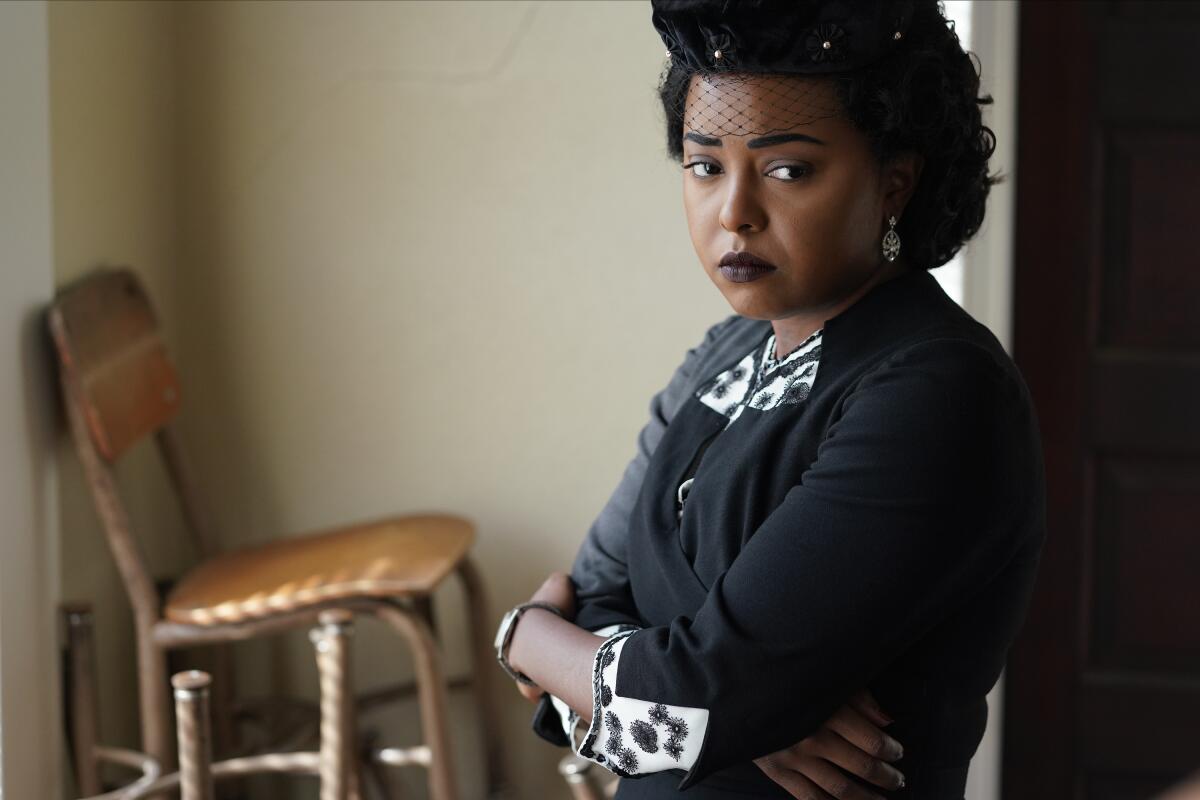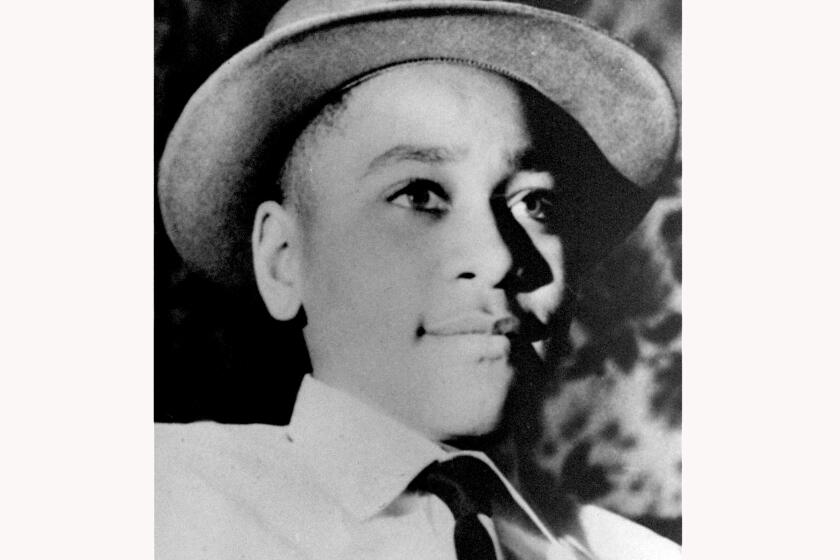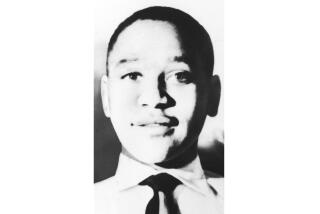Inside the harrowing decision to show Emmett Till’s brutalized body on network TV

The conclusion of the first night of ABC’s “Women of the Movement,” which chronicles Mamie Till-Mobley’s quest for justice following the brutal killing of her son Emmett Till, is both powerful and harrowing.
In a scene that takes place in a funeral home, Till-Mobley (played by Adrienne Warren) views her son’s mutilated body for the first time. The 14-year-old was kidnapped, tortured and lynched by racists in the Jim Crow South after being accused of whistling at a white woman in a grocery store.
Alone with the body, Till-Mobley softly touches her son’s legs, feet and arms, which have been slashed and bruised. Closing her eyes, she finally summons the strength to look at his face, which is horribly disfigured. Her expression is a mask of disbelief, grief and horror.
The sequence is intercut with glimpses of Till-Mobley lovingly caressing the baby Emmett in the hospital just moments after giving birth.
Barely breathing and without tears, she slowly leaves the room. Moments later, she instructs a Jet magazine photographer and reporter to describe and show to the world “what [Emmett’s killers] did to my boy.”
Creator and executive producer Marissa Jo Cerar understood the scene’s importance as she wrote it: “I outlined it — I knew exactly what it was. I knew what I wanted to happen.” Still, she says, filming the scene was challenging. “I was terrified. If we didn’t get it right, it would suck the whole meaning out of this series. It is the turning point. It launches the story.”
‘Women of the Movement’ is the rare scripted drama to examine Emmett Till’s 1955 killing — and mother Mamie Till-Mobley’s unwavering fight for justice.
“Women of the Movement” represents a breakthrough moment for broadcast television. Rarely has a major network explored in depth this violent moment in America’s racial history, and done so this unsparingly.
“We feel extremely strongly about the story, and why it’s such an important story to tell,” said Simran Sethi, executive vice president of development and content strategy for ABC Entertainment. “As a broadcast network, we have the ability and responsibility to reach the biggest audience possible. This project touches on a moment that is heartbreaking, but we really want to honor Mamie’s legacy and for people to see the truth.”

Avoiding the gruesome sight of Till’s body was not an option. A body cast was made of Cedric Joe, who plays Till in the series.
“We wanted to make it as realistic as we could, following in line with broadcast standards and practices,” Cerar said. “We have to see what Mamie saw. Otherwise, the story makes no sense. Jet printed the photos. The world reacted to the photos. We want our audience to react to what Mamie saw. And we could not see Emmett’s body until Mamie saw it. She is our guide to understand her horror and what she saw, and then her strength.”
The investigation into the lynching of Black teenager Emmett Till in Mississippi nearly 70 years ago ended as it began, with a mystery that might never be solved.
Warren also realized the importance of the scene, which tested her as an actor.
“I was having difficulty understanding Mamie’s strength,” Warren recalled. “I couldn’t understand why she had not mourned at that point, how she had not really cried, how she could see her child, her baby in that way, and not fall into a million pieces.”
It was then that she drew inspiration from her own family.
“I know my mom, and I know my grandparents,” she said. “As a mom, your kid is your kid, no matter what happens to them, no matter what they look like. I knew this was a mom who loved her baby. She got her baby back, she got her baby home, where she could make a decision to go forward.
“With that, it became very simple to just love on that baby, because that baby was a part of me. All I could do was focus on that love. And as she’s looking at that body, she’s also gathering information. What did they do to my baby? And now I’m going to do something to you.”
Cerar was overwhelmed by Warren’s performance: “Obviously Adrienne is astonishing in everything she does, but seeing it all on her face — there’s not one word of dialogue. Every move she makes, every breath, every tear she sucks back into her body — it’s just mesmerizing. She is a gift.”
More to Read
The complete guide to home viewing
Get Screen Gab for everything about the TV shows and streaming movies everyone’s talking about.
You may occasionally receive promotional content from the Los Angeles Times.









